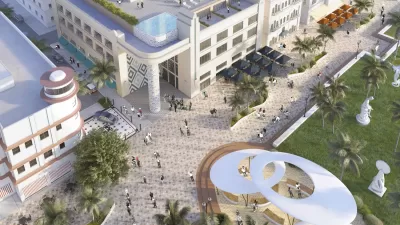Once a promising development for advocates pushing for a less car-centric future in cities, the open streets movement has ceded significant ground to cars since the height of the pandemic.

Winnie Hu reports for the New York Times about the slow retreat of New York City’s Open Streets initiative:
The city’s Open Streets initiative, which bans or restricts traffic at designated hours up to seven days a week year-round, became one of the few bright spots during the pandemic. But two and a half years later, this ambitious experiment has turned out to be much harder to maintain than expected.
The proof is in the numbers: Former Mayor Bill de Blasio targeted 100 miles of open streets and made the program permanent in September 2020. The program peaked at 83 miles, but there are now only 20 miles of open streets in the city. “Manhattan has the most open streets, with 8.8 miles, followed by Brooklyn, with 7.6 miles, and Queens, three miles. The Bronx and Staten Island each has less than a half-mile,” writes Hu.
The narrative arc of New York's Open Streets program mirrors a retreat by a planned expansion of bus priority around the city. The de Blasio administration promised a 20 miles of bus priority lanes in June 2020, just to retreat from that planned scale as the calendar changed months, and years—just another pandemic-era initiative that could have turned the tide against car-centric planning in the public realm.
As noted by Hu, open streets programs have had a hard time hanging on in cities all over the country: “Oakland, Calif., which set a national standard with its temporary, pandemic-era “slow streets,” phased them out this year, while nearby Berkeley wound down its “healthy streets” last year. Chicago replaced its “shared streets” with other initiatives, including expanded outdoor dining and a series of one-day open boulevards.”
The source article below documents the political pushback from drivers that has managed to reverse the Open Streets trend, as well as some of the planning challenges that still surround open streets programs, such as trash collection, programming, and equity. There are also examples of “breakout successes” to offer, including 34th Avenue in Queens, Vanderbilt Avenue and Berry Street in Brooklyn, and Dyckman Street in Manhattan, according to Hu.
FULL STORY: How New York City Lost 63 Miles of Pedestrian-Friendly ‘Open Streets’

Trump Administration Could Effectively End Housing Voucher Program
Federal officials are eyeing major cuts to the Section 8 program that helps millions of low-income households pay rent.

Planetizen Federal Action Tracker
A weekly monitor of how Trump’s orders and actions are impacting planners and planning in America.

Ken Jennings Launches Transit Web Series
The Jeopardy champ wants you to ride public transit.

California Invests Additional $5M in Electric School Buses
The state wants to electrify all of its school bus fleets by 2035.

Austin Launches $2M Homelessness Prevention Fund
A new grant program from the city’s Homeless Strategy Office will fund rental assistance and supportive services.

Alabama School Forestry Initiative Brings Trees to Schoolyards
Trees can improve physical and mental health for students and commnity members.
Urban Design for Planners 1: Software Tools
This six-course series explores essential urban design concepts using open source software and equips planners with the tools they need to participate fully in the urban design process.
Planning for Universal Design
Learn the tools for implementing Universal Design in planning regulations.
Ada County Highway District
Clanton & Associates, Inc.
Jessamine County Fiscal Court
Institute for Housing and Urban Development Studies (IHS)
City of Grandview
Harvard GSD Executive Education
Toledo-Lucas County Plan Commissions
Salt Lake City
NYU Wagner Graduate School of Public Service




























